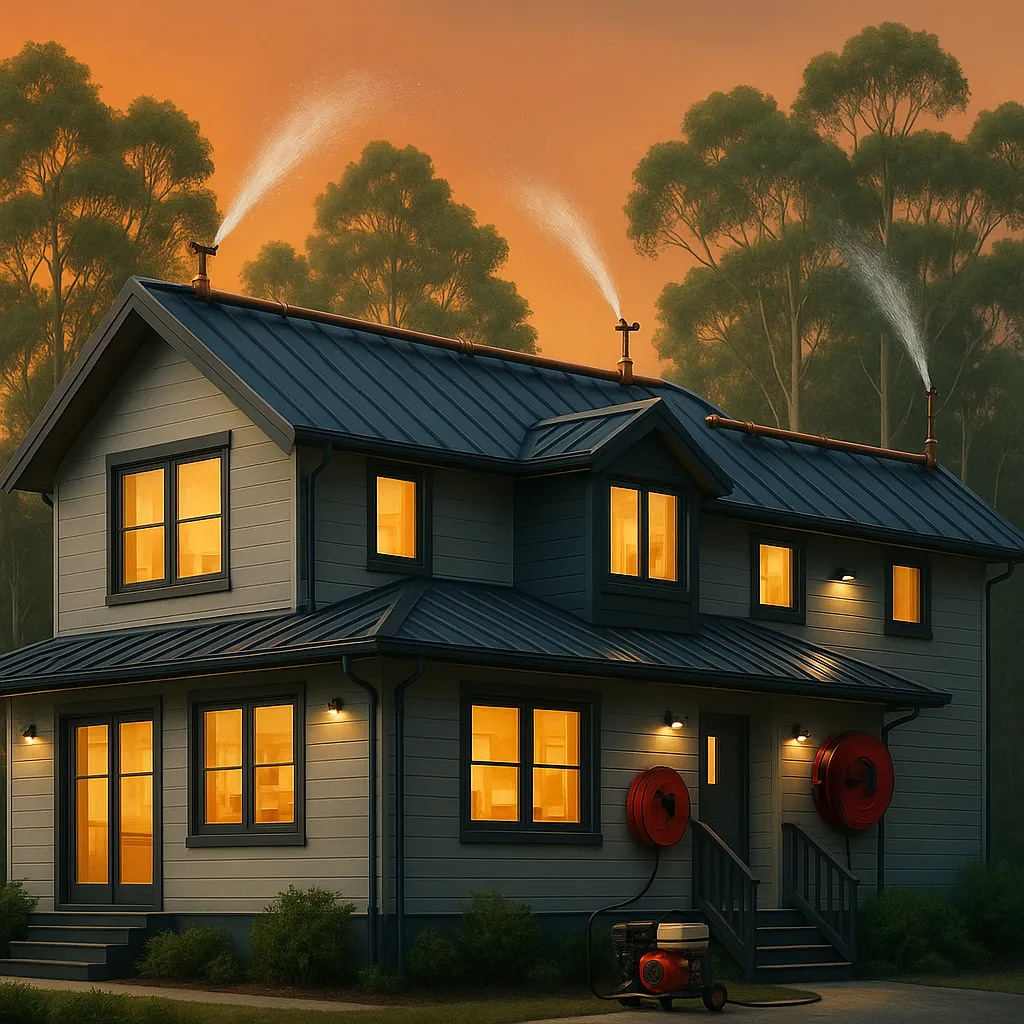In Australia, fire is not a distant threat. It is a part of the landscape, the climate, and the calendar. It arrives not as a stranger, but as something ancient and familiar—something that shapes the land as much as it scars it.
And yet, despite its predictability, bushfires still take too many by surprise.
That surprise is not a failure of nature, but it is a failure of design.
The Calm Before the Smoke
Most homeowners think about bushfire resilience when the sky turns orange and the winds shift. But the best time to prepare isn’t in December. It’s in June. In the stillness of winter, when the grass is wet and the air is quiet, decisions can be made with clarity rather than fear.
Bushfire resilience begins not with panic buying, but with careful planning. It’s not about doing more in a crisis. It’s about doing less because you’ve designed systems that work when you’re not there to think about them.
Designing Fail Safes, Not Just Defences
Resilience isn’t the same as resistance. Resistance fails when conditions change. Resilience bends and flows. It adapts. It survives.
In a bushfire context, that means systems with redundancy and margin. For example, relying solely on an electric pump to run your sprinkler system is a gamble. Designing a backup—such as a gravity-fed tank positioned uphill—adds a layer of certainty when the grid goes down or the generator fails.
Similarly, consider your water sources. A single tank near the house is helpful, but a dedicated fire-fighting reserve with ember-proof fittings, accessible from outside the home, is better. Add a second access point to your property. Add as many as you can. Add a backup fuel supply. Add slack into your system, because fire leaves no time for second chances.
The Role of Landscape
Most bushfire advice focuses on buildings—sprinklers, fire blankets, sealed vents. But the landscape plays just as crucial a role. The shape of your land determines how fast a fire moves, where it gathers strength, and how it can be slowed.
Gravel paths and cleared driveways are not just for access. They are firebreaks. A well-placed earth berm or low retaining wall can redirect flame or wind. Even a change in garden bed layout can act as a passive defence—stopping radiant heat from reaching the walls of your home.
Plantings matter too. Some species burn hot and fast. Others smoulder, or deflect. By selecting fire-resistant vegetation and spacing trees thoughtfully, you can turn a garden into a buffer zone rather than a liability.
And then, of course, there’s mulch. A thick layer of bark mulch is a fire’s welcome mat. Use gravel or composted pine mulch near buildings instead, it’s less flammable, and just as effective for water retention, so long as it’s irrigated.
Non-Obvious Threats and Overlooked Fixes
It’s easy to think in terms of big, visible threats—flames licking at eaves, trees catching alight. But many homes burn down without a single direct flame contact. It’s the embers.
Tiny, wind-borne embers are the most common cause of house loss. They can drift for kilometres ahead of the fire front, finding their way into gaps under doors, into roof cavities, and through unprotected vents.
A single ember in a roof filled with leaves can undo all your planning.
That’s why gutter guards and regular roof maintenance matter. Why ember-proof mesh on vents and weep holes isn’t overkill. Why the simplest thing, like a clean deck and swept driveway, can sometimes be the difference between safety and catastrophe.
Another overlooked point: what happens after the fire?
Many properties survive the blaze only to become unliveable in the days that follow. No power. No water. No access. That’s why a well-thought-through property resilience plan should also include recovery systems—like battery storage, water purification, emergency lighting, and food caches. Resilience doesn’t end when the fire does.
Consultation Isn’t a Luxury—It’s Leverage
Every property is different. Slopes, winds, vegetation, building materials, rainfall, orientation—all of these influence what’s possible and what’s essential.
That’s where consultation saves time, money, and stress. A single on-site review can prevent thousands of dollars in wasted effort and help prioritise where your energy is best spent. It can reveal blind spots, offer localised solutions, and map out a phased plan that suits your land, your life, and your budget.
Too many homeowners try to DIY their fire resilience. While the intention is admirable, the result is often patchwork and incomplete—systems that fail when they’re needed most.
With the right guidance, you don’t just prepare. You design. You invest. You build confidence.
This Is About More Than Fire
Bushfire resilience is not just about survival. It’s about sovereignty. It’s about protecting what you’ve built, and ensuring your family has the freedom to remain grounded and secure—even when the wider world feels unstable.
Designing for bushfire isn’t just smart, it’s a quiet form of rebellion. A way to say: we will not be caught unready. We will not rely solely on distant systems to come to our rescue. We will think ahead. We will act with care.
And in doing so, we create homes that don’t just endure—but stand strong, serve daily life, and offer peace in the unknown.
